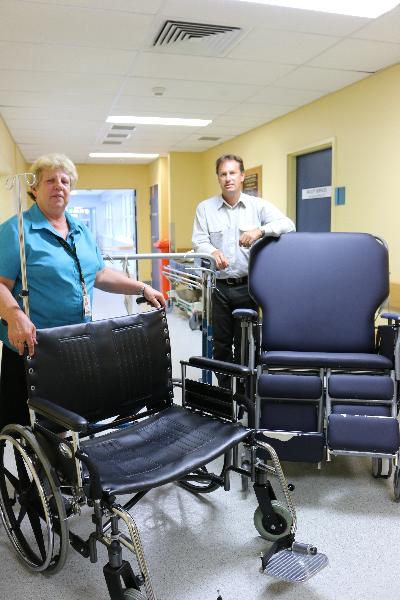
IT’S a sobering sign of the times, society’s ever expanding waistline.
And the stark reality of the battle faced here in the bush was brought to the fore last week, with news Warwick, Stanthorpe, Inglewood and Texas hospitals would soon receive special large-scale equipment to help staff safely manage the burgeoning bulge.
Darling Downs Hospital and Health Service (DDHHS) board chair Mike Horan said the committee approved the purchase of around 100 pieces of bariatric equipment for use across the 20 hospitals operated by the health service.
He said the board decided to spend $400,000 worth of its surplus on improving patient care and staff welfare.
“Unfortunately we are finding increasing numbers of patients who are dangerously overweight,” Mr Horan said.
“This poses a risk to the patients in hospital to safely use normal equipment like beds, mattresses, shower chairs, commodes and wheelchairs which is designed to be used up to a certain weight but may break beyond this weight.”
A patient may be classified as bariatric if they have a body mass index (BMI) greater than 30 and their size or body shape restricts mobility and/or patient care.
For men this classification can start at around 144kg and for women about 130kg.
Mr Horan said staff also caring for morbidly obese patients needed to be given additional equipment such as specially made hoists, rolling devices and slings to assist them to safely care for patients and not risk injuries to themselves.
Some of the specialist bariatric equipment is rated for patients weighing up to 455kg, with the most common load limits between 250kg and 350kg. It will be purchased in 2015.
“Using the surplus generated by the increased productivity of our employees to improve the safety and quality of care provided was a great example of the board’s community dividend program in action,” Mr Horan said.
Last year 547 patients classified as obese were treated at one of the health service’s hospitals, according to DDHS records.






